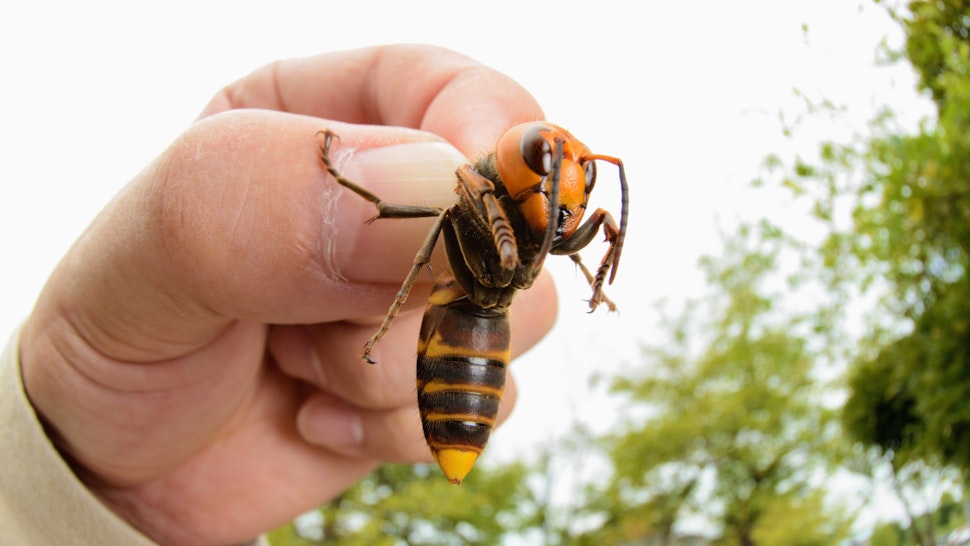On May 2nd in was reported that America is being populated by what's known commonly as the ‘Murder Hornet"! In the article, Tracking the ‘Murder Hornet’: A Deadly Pest Has Reached North America, and it's going to impact honey bees they state:
In his decades of beekeeping, Ted McFall had never seen anything like it. As he pulled his truck up to check on a group of hives near Custer, Wash., in November, he could spot from the window a mess of bee carcasses on the ground. As he looked closer, he saw a pile of dead members of the colony in front of a hive and more carnage inside — thousands and thousands of bees with their heads torn from their bodies and no sign of a culprit.
“I couldn’t wrap my head around what could have done that,” Mr. McFall said.
Only later did he come to suspect that the killer was what some researchers simply call the “murder hornet.”
 |
| Giant Asian Hornet mandibles |
They have very long stingers which are capable of penetrating beekeeping suits. That's a scary piece of information, and clearly a new issue for the pest control industry, and it's noted in the article:
In Japan, the hornets kill up to 50 people a year.
 |
| Giant European Hornet |
I went to a lecture by Austin Frishman over thirty five years ago and he claimed it appeared on the East coast some years before and spread west rapidly. I had the far East route in my company in Ohio, and was the first to bring one back to the office, and no one had any idea what it was.
However, these Giant European Hornets are not even as aggressive as yellow jackets, and certainly not this Asian variety, and as far as I can tell they aren't a threat to honey bee hives.
Here are some you tube presentations on Giant Asian Hornets:
- Killer Hornets From Hell
- Asian giant hornet in the Pacific Northwest - Feb 2020
- Here's one that's interesting: Asian Hornet Nest Removal, but this was done after the season turned cold, and it also makes clear climatic conditions won't stop them.
- This one demonstrates just how aggressive they are: Two Giant Killer Hornet Colonies Fight to the Death
- They're also listed as one the ten deadliest insects on the planet.
Beekeepers and pest control people need to be aware, alert and prepared. It seems reasonable to me it's going to take all new protective gear to deal with this menace. The techniques and tools to deal with them will remain the same, but it also seems to me we're going to need new protective gear.

No comments:
Post a Comment